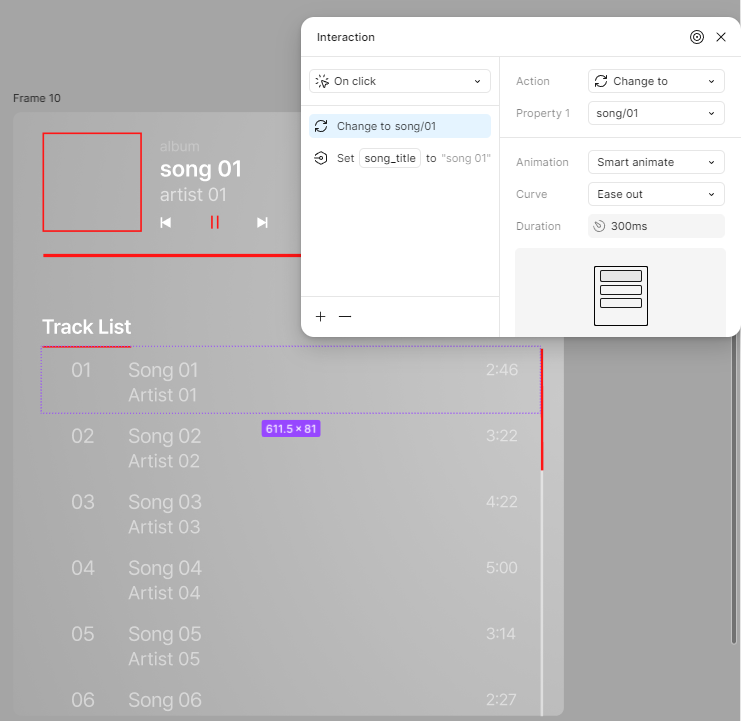Please search for existing topics before posting! Press 🔍 at the upper right to search.
Please search for existing topics before posting! Press 🔍 at the upper right to search.
Hello. I have a question about the text variable feature. I am creating a soundtrack page where the color changes to a light red when hovering, and to a darker red when clicked. I used the “click → change to” component for this. However, I want to use the text variable feature to change the title of the currently playing music when a track is clicked. But when I try to add a variable to the “click → change” action in the prototype animation, either the “change to” function doesn’t work, or the variable feature doesn’t work. Is it possible to implement both at the same time?

